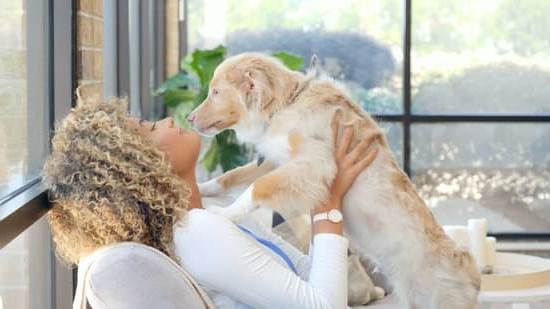Are you wondering how to litter train a small dog? Litter training can offer numerous benefits for small dog owners, from convenience and peace of mind to flexibility in living situations. In this article, we will explore the importance of litter training for small dogs and provide valuable insights into understanding their behavior.
We will also discuss the crucial factors to consider when choosing the right litter box, as well as effective training techniques and tools. Whether you’re a first-time small dog owner or looking to improve your current litter training methods, this comprehensive guide will set the tone for successful litter training.
Small dogs have their own unique behavior when it comes to eliminating waste, and understanding these instincts is key to successful litter training. Compared to larger breeds, small dogs present specific challenges that require a tailored approach to training. From selecting the appropriate size and design of a litter box to establishing a consistent routine, there are several essential factors that can impact a small dog’s litter training journey.
By delving into the different types of litter boxes suitable for small dogs and providing tips on choosing the right one, small dog owners can ensure a positive experience for their furry companions. Additionally, we will offer guidance on how to place the litter box strategically within the home environment. With an understanding of your small dog’s behavior and needs, you can make informed decisions throughout the litter training process.
Understanding the Small Dog’s Behavior
Understanding the natural instincts and behavior of small dogs is crucial when it comes to litter training. Small dogs, like all dogs, have an instinctual desire to keep their living space clean. In the wild, canines will typically eliminate waste away from their den or sleeping area.
However, small dogs may face unique challenges when it comes to litter training compared to larger breeds. Due to their tiny size, they may struggle with accessing traditional litter boxes or finding a suitable elimination spot within the home.
It’s important for small dog owners to understand that the success of litter training largely depends on recognizing and accommodating the specific needs of their pets. Factors such as breed tendencies, age, health conditions, and individual preferences all play a role in how a small dog approaches litter training. For instance, some small breeds may be more prone to developing territorial behaviors and marking habits.
When considering how to litter train a small dog, it’s essential to recognize that patience and consistency are key. Small dogs may take longer than larger breeds to grasp the concept of using a designated bathroom area. Understanding their behavior and being mindful of their limitations can significantly influence the effectiveness of the training process.
Choosing the Right Litter Box
| Litter Box Type | Tips for Selection |
|---|---|
| Traditional Open Box | Ensure low entry point for easy access |
| Enclosed Box | Choose a spacious yet enclosed design for added privacy |
| Pee Pads or Grass Patches | Consider options for dogs who prefer different surfaces |
Choosing the Right Litter Box
When it comes to litter training a small dog, choosing the right litter box is crucial for success. Small dogs have different needs compared to larger breeds, so the litter box must be appropriate for their size and behavior.
Different Types of Litter Boxes
There are various types of litter boxes available on the market, including traditional open pans, covered boxes, and automatic self-cleaning models. For small dogs, it’s essential to choose a litter box that is low enough for them to comfortably enter and exit. Covered boxes can provide privacy but may feel too confining for some small dogs. Automatic self-cleaning boxes should be carefully introduced to ensure they don’t startle or intimidate the dog.
Size and Design Considerations
When selecting a litter box for a small dog, it’s important to consider the dimensions of the box. The box should be spacious enough for the dog to move around comfortably while also being easy for them to access.
Look for boxes with low sides or even consider purchasing a specialized “small dog” litter box designed specifically for tiny breeds. Additionally, some small dogs may prefer an open-top design that allows them to easily step in and out without feeling trapped.
Placement in the Home
The location of the litter box within the home can also impact a small dog’s willingness to use it. Place the box in a quiet, easily accessible area where the dog feels comfortable. Avoid placing it near their sleeping or feeding area as dogs generally do not like eliminating waste near their designated living spaces. Additionally, avoid placing the litter box in high-traffic areas where the dog may feel anxious or distracted when trying to eliminate.
By taking these factors into consideration when choosing a litter box for a small dog, you can set them up for successful litter training and create a positive experience that encourages good potty habits.
Training Techniques and Tools
Step-by-Step Guide
When it comes to litter training a small dog, patience is key. Begin by introducing your small dog to the designated litter box area. Place your dog in the box after meals or naps, as these are times when a dog is most likely to eliminate waste. If your dog eliminates outside of the box, clean up the mess without punishing your pet. It’s important to remain consistent and patient during the training process.
Positive Reinforcement Methods
Positive reinforcement is essential for successful litter training. When your small dog uses the litter box, be sure to praise and reward them with treats or verbal affirmation. Conversely, avoid scolding or punishment for accidents that occur outside of the designated area. This will only create confusion and anxiety for your small dog.
Recommended Training Aids
There are several products available to assist in the litter training process for small dogs. Some owners find success using attractant sprays that encourage their pets to use the designated area for elimination. Additionally, consider using puppy pads or artificial grass patches as a temporary solution while transitioning your small dog to use a litter box. These aids can help mitigate accidents while establishing a routine for proper waste elimination.
By following these techniques and utilizing appropriate tools, you can successfully litter train a small dog with patience and consistency.
Establishing a Routine
When it comes to litter training a small dog, establishing a consistent routine is crucial for success. Small dogs, like any other pets, thrive on routine and structure, so it’s important to set up a schedule that works for both you and your furry friend. Here are some tips for establishing a routine for litter training your small dog:
1. Set a Schedule: Determine the times of day when your small dog typically needs to eliminate waste and create a schedule around those times. This will help your dog understand when it’s time to use the litter box and reduce accidents around the house.
2. Use Positive Reinforcement: Whenever your small dog successfully uses the litter box, be sure to praise and reward them. Positive reinforcement helps reinforce good behavior and encourages your dog to continue using the litter box.
3. Consistency is Key: Stick to the established routine as much as possible. Consistency will help your small dog understand what is expected of them and make the litter training process more effective.
Additionally, it’s essential to be patient during the litter training process. Small dogs may take longer to learn compared to larger breeds, so consistency and persistence are key factors in successfully litter training a small dog.
By following these tips and establishing a routine for your small dog’s potty breaks, you can help make the litter training process smoother and more successful. Remember that every small dog is different, so be patient and stay committed to the training process until your furry friend fully understands how to use their designated litter box effectively.
Overall, creating an effective routine for litter training is essential for small dog owners who want their pets to have good indoor elimination habits while maintaining cleanliness in their homes.
Transitioning to Outdoor Elimination
After successfully litter training your small dog, you may eventually want to transition them to eliminate outside. This process requires patience and consistency to ensure a smooth shift in your pet’s elimination habits. The transition from using a litter box indoors to going outside can be achieved with the right techniques and guidance.
One of the first steps in transitioning your small dog to outdoor elimination is to gradually introduce them to the idea of going outside for potty breaks. Start by taking your pet out at regular intervals, such as after meals, playtime, and naps. It’s essential to pay attention to your dog’s body language and behavior cues that indicate they need to eliminate.
As your small dog begins to show signs of understanding the outdoor elimination routine, start reducing the availability of the indoor litter box. Slowly decrease the number of times you empty and clean the litter box, giving your pet more opportunities to go outside instead. Over time, you can completely remove the litter box from your home once your small dog consistently eliminates outdoors.
Ensuring a smooth transition from indoor to outdoor elimination habits also involves positive reinforcement. Praise and reward your small dog each time they successfully eliminate outside. Using treats or verbal praise will help reinforce this desired behavior and motivate them to continue using the outdoor area for potty breaks.
| Transitioning Tips | Benefits |
|---|---|
| Gradually introduce outdoor potty breaks | Reduces dependency on indoor litter box |
| Reduce availability of indoor litter box | Promotes consistent outdoor elimination |
| Use positive reinforcement techniques | Motivates small dogs to continue eliminating outside |
Maintaining Successful Litter Training
Once you have successfully litter trained your small dog, it is important to continue reinforcing the training in order to maintain good habits. Here are some tips for maintaining successful litter training for your small dog:
1. Clean the litter box regularly: It’s crucial to keep the litter box clean and inviting for your small dog. Regularly remove waste and change the litter as needed to prevent odor buildup and ensure that your dog feels comfortable using the box.
2. Monitor your small dog’s behavior: Keep an eye on your small dog’s bathroom habits and behaviors to ensure that they are consistently using the litter box. If you notice any changes in their behavior, it could be a sign of discomfort or illness, so be sure to address any issues promptly.
3. Addressing potential challenges: As your small dog matures, they may encounter new challenges or setbacks with their litter training. Be patient and persistent in addressing these challenges, whether it’s a change in environment, health issues, or behavioral changes.
By following these practices, you can help maintain successful litter training for your small dog and ensure that they continue using the litter box effectively.
Remember that every small dog is different, so it’s important to adapt these maintenance tips according to your pet’s specific needs and behaviors. With patience and consistency, you can help keep your small dog successfully litter trained for years to come.
Conclusion
In conclusion, litter training a small dog requires patience, consistency, and understanding of the dog’s behavior. It is essential for small dog owners to consider litter training as it provides numerous benefits, including convenience for the owner and a comfortable potty solution for the dog. By understanding the natural instincts of small dogs when it comes to eliminating waste and choosing the right litter box and training techniques, small dog owners can successfully litter train their pets.
Choosing the appropriate size and type of litter box is crucial in ensuring successful litter training for small dogs. Additionally, establishing a consistent routine and using positive reinforcement methods are key factors in the training process. Small dog owners should also be prepared to transition their pets to outdoor elimination gradually while maintaining a clean and inviting litter box for any potential setbacks.
In essence, while litter training a small dog may present its challenges due to the breed’s size, with dedication and effort, it is entirely possible. Small dog owners should remain patient and persistent throughout the process – both they and their pets will benefit from this endeavor. With the right tools, techniques, and routines in place, small dogs can be effectively litter trained to ensure a harmonious cohabitation with their human companions.
Frequently Asked Questions
Can You Train a Small Dog to Use a Litter Box?
Small dogs can be trained to use a litter box, especially if they are not able to go outside regularly. It’s a matter of consistency and using positive reinforcement to encourage the behavior.
Can Small Dogs Be Fully Potty Trained?
Yes, small dogs can be fully potty trained with time, patience, and consistency from their owner. Like larger dogs, they require positive reinforcement, patience, and a regular schedule to establish good potty habits.
How Long Does It Take to Potty Train a Small Dog?
The time it takes to potty train a small dog can vary depending on the individual dog and their breed. On average, it can take anywhere from a few weeks to a few months for a small dog to be fully potty trained. Consistency in training and positive reinforcement are key factors in successfully potty training a small dog.

Welcome to the blog! I am a professional dog trainer and have been working with dogs for many years. In this blog, I will be discussing various topics related to dog training, including tips, tricks, and advice. I hope you find this information helpful and informative. Thanks for reading!





